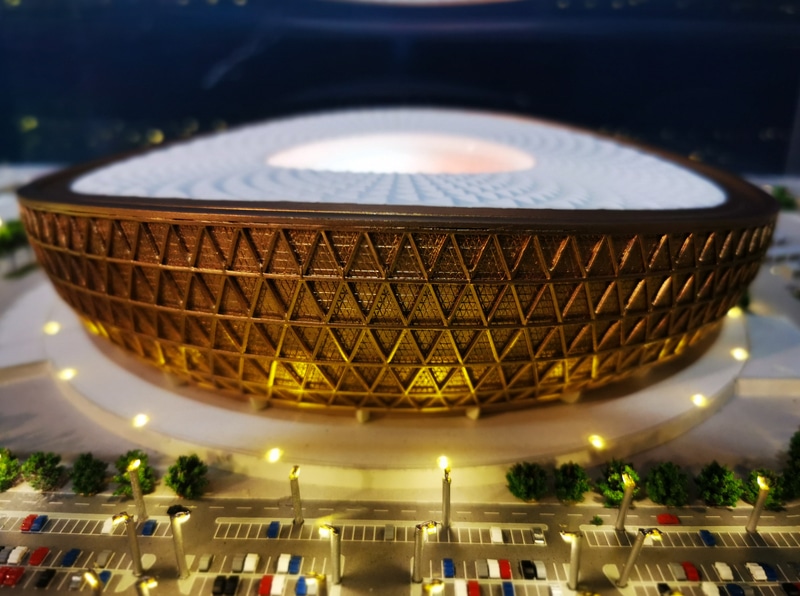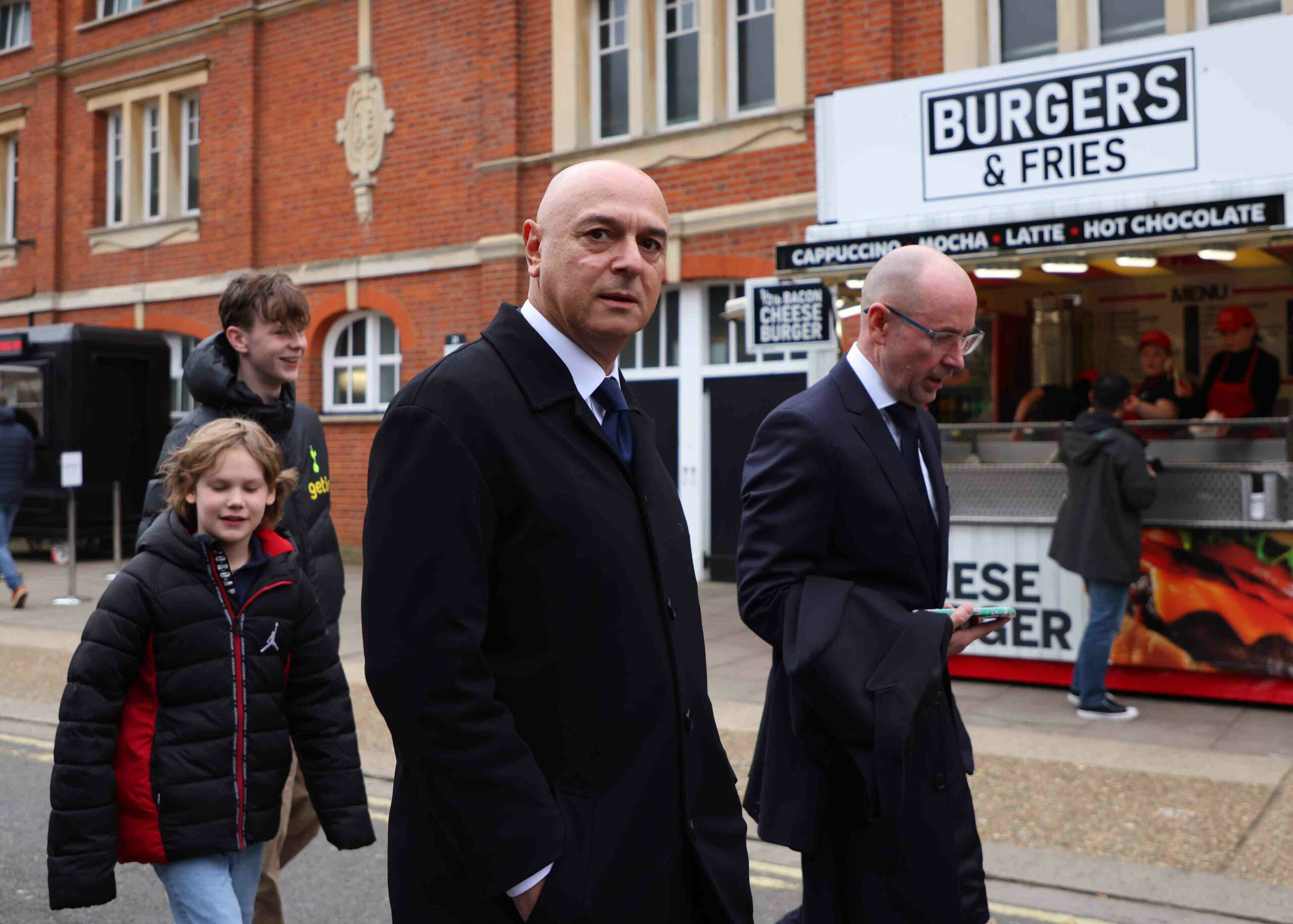The highly contentious 2022 World Cup takes place later in the year, as nations battle to come out on top. Controversy has surrounded much of the build-up for the first-ever competition to be held in the Arab world, with many fans boycotting the tournament due to strong beliefs of the human rights issues, LGBTQ+ acceptance and FIFA corruption, as the governing body threaten a competition every two years.
However, nothing is now standing in the way of the competition going ahead, as the eight venues across five cities have all been constructed, and you can find out more about the stages that will be on show during the winter World Cup below.
Lusail Iconic Stadium
• Location: Lusail, Qatar
• Capacity: 80,000
The stadium that all players will be hoping to play in later in the year is the Lusail Iconic Stadium. The beautifully developed stadium opened its doors for the first time in November 2021, and was constructed by HBK Construction. The stadium will host the 2022 World Cup Final in December, and has a maximum capacity of 80,000.
Like many of the stadiums that will be used throughout the competition, there will be a cooling system in place, which is controlled by solar power. Furthermore, it boasts a zero carbon footprint. The stadium will host ten games in total throughout the World Cup, which includes matches in the semi-final, quarterfinal, and round of 16.
The stadium will be reconfigured into a 20,000-seater stadium following the World Cup. It will also remove extra seating areas and shops, education facilities, and a health clinic will be developed.
Al-Bayt Stadium
• Location: Al Khor, Qatar
• Capacity: 60,000
The 2022 World Cup will get underway at the Al-Bayt Stadium on November 21st, as Qatar kicks off its campaign. This stadium was constructed by Webuild S.p.A and Cimolai, and has been awarded certificates for green design, energy efficiency, and construction management. The stadium was officially opened in November 2021, with Qatar playing their first game there on December 1oth against the UAE. A record attendance of 63,739 fans was recorded.
It is one of the most accessible stadiums involved at the World Cup, as it is connected to a train station, and also includes on-site parking to accommodate over 6,000 cars, 150 busses and 1,000 taxis. Fans will likely enjoy their experience at the stadium, as the retractable roof ensures spectators will be out of the sun’s glare.
The stadium will host one of the two semi-finals, as well as fixtures at the quarterfinal and round of 16 stage.
Stadium 974
• Location: Doha
• Capacity: 40,000
While many of the stadiums that have been constructed will be redeveloped for future use, one stadium that will be deconstructed immediately after the 2022 World Cup is Stadium 974. It was formerly called the Ras Abu Aboud Stadium, and was opened in November 2021. The architect behind the design is Fenwick Iribarren Architects.
It is expected to be one of the most eye-catching stadiums used during the World Cup, as it is located on the waterfront in Doha. The stadium is also one of the most unusual to look at, as it was constructed using recycled shipping containers, with the stadium called ‘974’ as a reference to Qatar’s dialing code. Recycled shipping containers are also used as public restrooms for those attending fixtures.
This stadium has been widely accepted, as it was granted a four-star rating on the Global Sustainability Assessment System. The first match that was held at the stadium was the fixture between the UAE and Syria at the FIFA Arab Cup.
Al Thumama Stadium
• Location: Al Thumama, Qatar
• Capacity: 40,000
The Al Thumama Stadium is also located in Doha, and is a 40,000-capacity stadium that was built between 2017 and 2021. Construction began on the stadium in 2017, and was carried out by Tekfen Construction. The stadium was custom-built for the competition, and is located near Hamad International Airport.
There is a very special meaning behind the design of the stadium, as architects took inspiration from the traditional taqiyah hats that are worn by locals. Once again, it is an extremely accessible stadium, with 20,000 square meters of public parking available on-site. Like other stadiums, there is an eye on the future, as half of the seats used in the stadium will be removed at the conclusion of the World Cup and donated to other nations.
The stadium has already gone down with international fans, as it was used six times throughout the FIFA Arab Cup last year. It hosted the semi-final fixture between Qatar and Algeria.
Education City Stadium
• Location: Al Rayyan, Qatar
• Capacity: 45,350
As the name would suggest, the Education City Stadium is located in the middle of the several university campuses in Al Rayyan. The stadium will host several fixtures throughout the World Cup, including a quarterfinal on December 9th. Development started on the stadium in 2016 by Joannou & Paraskevaides Conspel Qatar. It was officially opened just under four years later.
It will host a capacity of 45,350 fans at the World Cup, and the first test matches have already been staged. The stadium hosted its first official fixture during the 2020-21 Qatar Stars League season. It was also awarded a five-star rating with GSAS.
Once the World Cup has concluded, the stadium will continue to be used by university athletic teams, as sides will be able to play in front of up to 25,000 spectators. The Education City Stadium was the third stadium that will be used in Qatar to be completed.
Ahmed bin Ali Stadium
• Location: Al Rayyan, Qatar
• Capacity: 44,740
The Ahmed bin Ali Stadium is one of a few stadiums that had already been constructed before Qatar won the vote to host the World Cup. It is popularly known as the Al-Rayyan Stadium due to it being located in that area of Qatar. The stadium has hosted football fixtures throughout its history, with both the Al-Kharitiyath Sports Club and Al-Rayyan Sports Club calling it home.
The stadium was built in 2003, and housed up to 21,282 fans. However, it was renovated in preparation for the 2022 World Cup, with the capacity nearly doubled to 40,740. As part of the renovation, the stadium will become modernized, with a membrane added to screen news updates, commercials, and tournament information.
The first game following the redevelopment of the stadium was staged on December 18th 2020, which also fell on the exact day that the World Cup final would take place in Qatar two years later. The stadium’s most famous game to this point was the FIFA Club World Cup semi-final between Bayern Munich and Al Ahly.
Khalifa International Stadium
• Location: Al Rayyan, Qatar
• Capacity: 40,000
The oldest stadium that will be used during the 2022 World Cup is the Khalifa International Stadium. The stadium has hosted Qatar national team fixtures since 1976, but has been redeveloped twice in its near 50-year history. As well as the national side, the stadium is an important part of the Doha Sports Complex, alongside the Hamad Aquatic Centre and Aspire Tower. The stadium is named after Khalifa bin Hamad Al Thani, who is the former Emir.
Back in 2017, the stadium became the first ever to be awarded a four-star GSAS rating. It is also a vital part of the local economy, with over 30,000 workers part of the team at the arena. The World Cup in 2022 will be the biggest sporting event that has been staged at the arena, but it has previously staged the 2019 World Athletic Championship, 2006 Asian Games, and the 2021 Arab Cup. It was also home to the 2019 FIFA Club World Cup final, which saw Liverpool beat Flamengo 1-0.
Many of the biggest national teams have played at this arena in the past. England and Brazil met in a friendly at the stadium in 2009, while Argentina, Spain, Uruguay, and Mohamed Salah’s Egypt have also played fixtures at the stadium before the start of the World Cup. The stadium will play host to many games throughout the 2022 World Cup, including the match for third-place on December 17th.
Al-Janoub Stadium
• Location: Al Wakrah, Qatar
• Capacity: 40,000
The Al-Janoub Stadium was the second of the stadiums that will be used at Qatar 2022 to be completed. It was officially opened in 2019 after ground was broke in 2014. The stadium was designed by Zaha Hadid, and was developed by AECOM. There is a traditional theme to the stadium, as it drew inspiration from Dhow boats that are used to weave through the currents on the Persian Gulf. It is one of the more modern-looking stadiums that has been developed, and will welcome 40,000 fans at the World Cup.
The capacity of the stadium will be reduced following the conclusion of the World Cup, as Qatar Stars League side Al-Wakrah SC will play their games in front of 20,000 spectators at the arena. The first game to be played in the stadium was in May 2019, as Al Duhail SC and Al Sadd SC clashed in the Amir Cup final. That fixture was attended by 38,678 fans, including Emir of Qatar, Sheikh Tamim bin Hamad Al Thani.
Once the World Cup is over, the stadium will be the home of al-Wakrah Sports Club. The seats taken out to reduce the capacity to 20,000 will be donated to developing countries that need sporting infrastructure.





